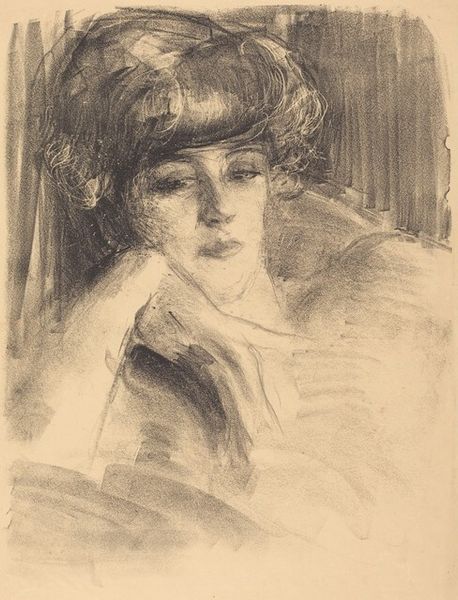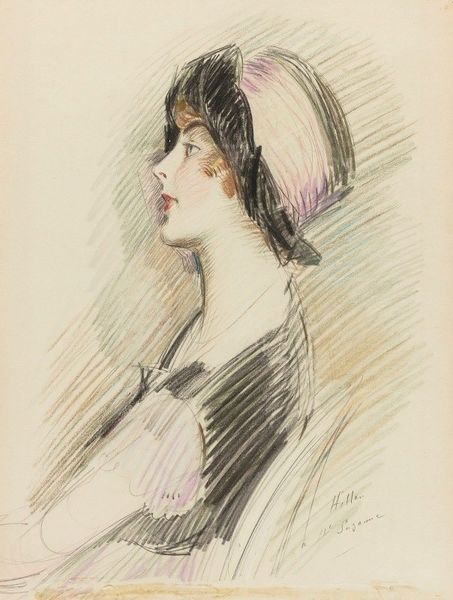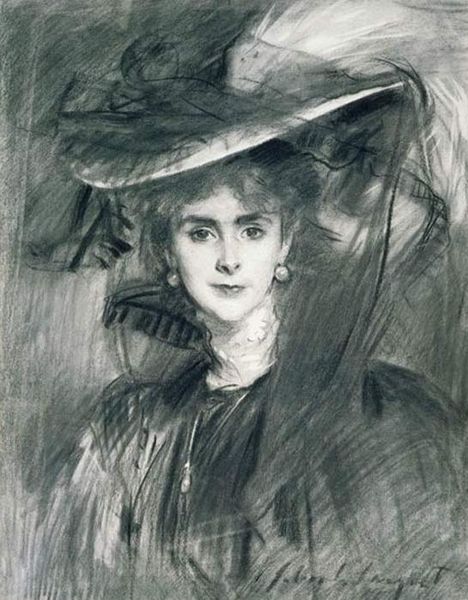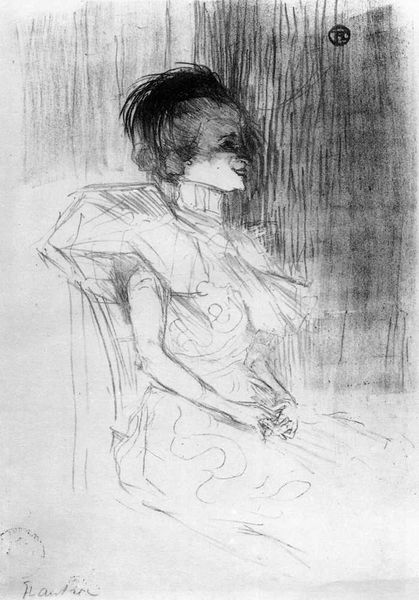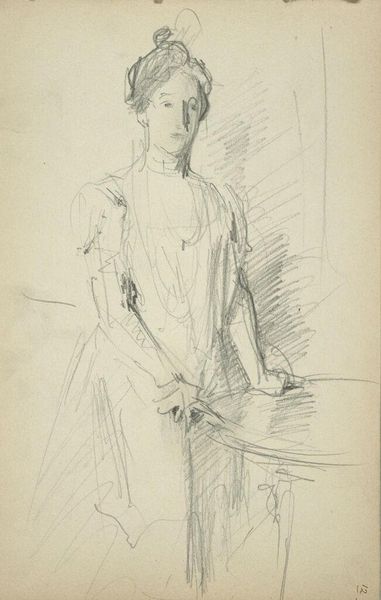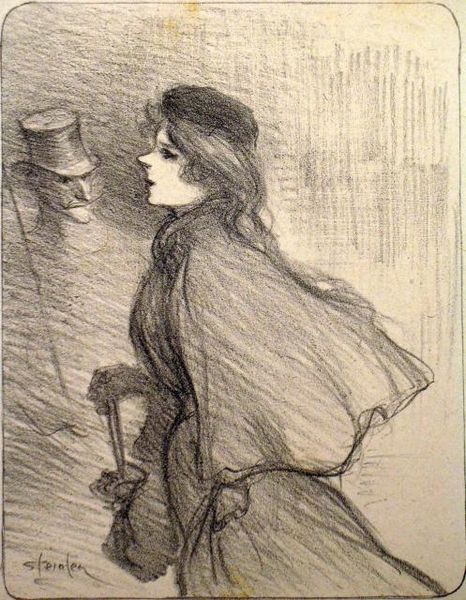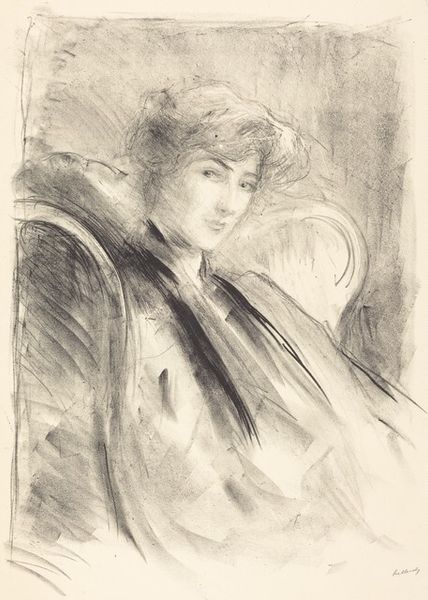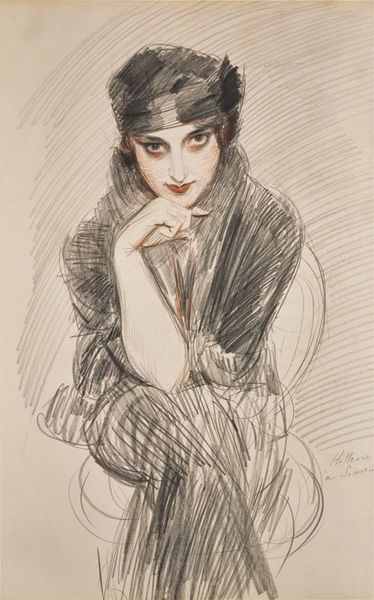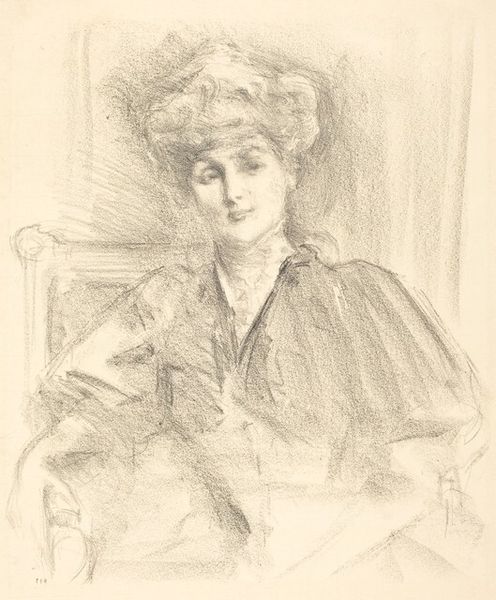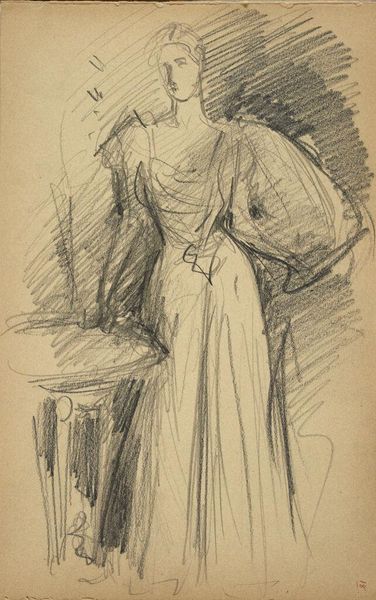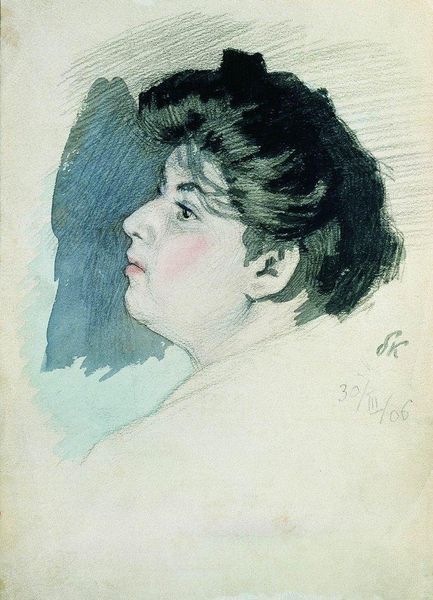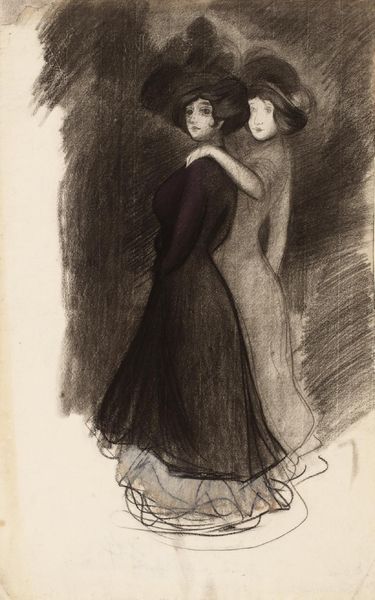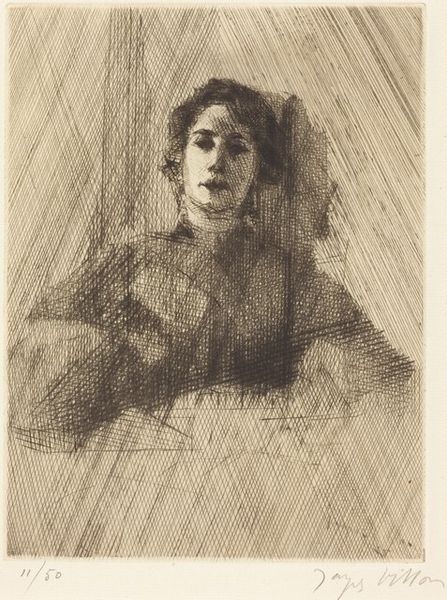
drawing, charcoal, pastel
#
portrait
#
pencil drawn
#
drawing
#
impressionism
#
charcoal drawing
#
pencil drawing
#
sketch
#
portrait drawing
#
charcoal
#
pastel
Copyright: Public domain
Editor: We're looking at "Reading" by Giovanni Boldini. It appears to be a charcoal and pastel drawing, maybe a sketch. It's evocative; the marks are so visible, raw, but also obscure some of the details of her face and clothing. How should we interpret this piece? Curator: Look closely at those marks. Boldini doesn't conceal the labour; he makes the *process* visible. Charcoal, pastel – readily available, relatively inexpensive materials. Think about the social context. Was this a study? A portrait for a patron who appreciated visible brushwork and implied immediacy? The deliberate display of artistic production seems key. Editor: So you're focusing on how it's made rather than, say, who the woman is? Curator: Exactly! While some might ask about the sitter's identity or her relationship to Boldini, I am compelled by his choice of materials and the way he manipulates them. Consider, for example, the sweeping strokes suggesting drapery versus the more delicate hatching around her face. This implies that he prioritized rendering the *texture* of the material world more than this individual. Editor: That's a good point. It challenges the conventional boundaries of portraiture. The focus is less on the individual and more on the act of creating the portrait itself. Curator: And what that says about the culture surrounding artistic production! It speaks volumes that a patron would value seeing the 'backstage' work as much, if not more, than the polished result. It speaks about consumption. Editor: I never thought about portraiture in that way. Looking at the materials and technique has given me a new understanding of the work. Curator: Exactly. The point isn’t just *what* we see, but *how* it was made and *why*.
Comments
No comments
Be the first to comment and join the conversation on the ultimate creative platform.
